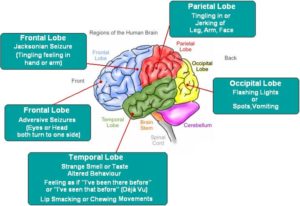“Chronic obstructive pulmonary disease (COPD) is a chronic inflammatory lung disease that causes obstructed airflow from the lungs. Symptoms include breathing difficulty, cough, mucus (sputum) production and wheezing.”
MAYO CLINIC
“Chronic obstructive pulmonary disease (COPD) is a chronic inflammatory lung disease that causes obstructed airflow from the lungs. Symptoms include breathing difficulty, cough, mucus (sputum) production and wheezing.”
MAYO CLINIC
“The stage of a cancer describes how much cancer is in the body. It helps determine how serious the cancer is and how best to treat it. The staging system used most often for pancreatic cancer is the AJCC (American Joint Committee on Cancer) TNM system, which is based on 3 key pieces of information: 1-extent of the tumor (T) 2- spread to nearby lymph nodes (N) 3- The spread (metastasized) to distant sites (M).”
American Cancer Society
“Oncologists will conduct tests to classify the type and stage of your disease. Staging is a process that determines the spread of the cancer cells within and around the pancreas. Diagnosis and staging of pancreatic cancer usually happen at the same time.”
“While your initial assessment may include CT scanning and magnetic resonance imaging (MRI), we use more advanced tools to confirm your pancreatic cancer diagnosis and to determine its extent—a process called staging.”
Columbia Presbyterian Hospital NYC
“November is a month of empowerment, education and inspiration for communities far and wide who have been touched by pancreatic cancer. It is our opportunity to shine a light on this disease, to elevate our voices to raise awareness and invite others to read our blog for vital information on Pancreatic Cancer. It is a time to educate the world by sharing!”
striveforgoodhealth.com
“Several types of growths can occur in the pancreas, including cancerous and noncancerous tumors. The most common type of cancer that forms in the pancreas begins in the cells that line the ducts that carry digestive enzymes out of the pancreas (pancreatic ductal adenocarcinoma).”
MAYO CLINIC
“A risk factor is anything that increases your chance of getting a disease such as cancer. Different cancers have different risk factors. Some risk factors, like smoking, can be changed. Others, like a person’s age or family history, can’t be changed. In some cases, there is unknown etiology why the person got pancreatic cancer.
“Many wonder if they’ll ever lead a “normal” life again. Well, a “normal” life is still possible. That is to say, someone diagnosed with seizures can still do the same daily functions as someone without epilepsy.Several Advanced Neurosurgery Associates (ANA) children and adults are illustrative of the potential to live a normal life with epilepsy. It’s all in controlling the seizures.”
Advanced Neurosurgery Associates (ana-neurosurgery.com)
“Epilepsy is a chronic disorder, the hallmark of which is recurrent, unprovoked seizures. A person is diagnosed with epilepsy if they have two unprovoked seizures (or one unprovoked seizure with the likelihood of more) that were not caused by some known and reversible medical condition like alcohol withdrawal or extremely low blood sugar.
The seizures in epilepsy may be related to a brain injury or a family tendency, but often the cause is completely unknown. The word “epilepsy” does not indicate anything about the cause of the person’s seizures or their severity. Many people with epilepsy have more than one type of seizure and may have other symptoms of neurological problems as well.”
Epilepsy Foundation (www.epilepsy.com)


When the seizure occurs there is a decrease in oxygen since the brain isn’t capable to send messages during the seizure. The problem it too much electrical stimulation is happening in the brain causing the type of seizure to come on. If the seizure continues to repeat one right after another the person is in status epilepticus and if the seizures do not stop the person can lead to a neuronal death; like John Travolta’s son who died of this for example.
The term seizure disorder may refer to any number of conditions that result in such a paroxysmal electrical discharge. These conditions could be metabolic or structural in nature.
For example, if a metabolic condition this could be “Canavan disease” which is primarily a disease of demyelination. Your myelin sheath that protects and insulates the nerves is being destroyed and can cause a seizure as one of the symptoms.
*Another example being metabolic is thought to be caused by brain acetate deficiency resulting from a defect of N–acetylaspartic acid (NAA) catabolism (meaning breakdown is occurring). Accumulation of NAA, a compound thought to be responsible for maintaining cerebral fluid balance, can lead to cerebral edema and neurological injury, like a seizure as one symptoms of the disease.
*A structural condition to cause a seizure could be a tumor in the brain. Than there is just idiopathic, unknown cause for the epilepsy which if starts in childhood can resolve by the child growing out it, like in petite mal seizures but it not it goes into motor/focal or grand mal that is permanent the individual needs Rx for life.
Remember, not all seizures are due to epilepsy. Other conditions that can look like epilepsy include fainting, or very low blood sugar in some people being treated for diabetes.
Remember, etiology (the cause) of Epilepsy can be generally a sign of underlying pathology involving the brain–knowing the cause. To find this out diagnostic tooling be a neurologist who specializes in epilepsy is the best resource to go to. The epilepsy may be the first sign of a nervous system disease (ex. Brain tumor), or it may be a sign of a systemic or metabolic derangement. Where the treatment may be able to resolve the seizure symptom completely where this wasn’t a seizure disorder or epilepsy but just a symptom due to another disorder that may be 100% cured, like a operable tumor removed surgically from the brain.
Metabolic and Systemic Causes of Seizures:
a.) Electrolyte Imbalance=In the blood having acidosis, heavy metal poisoning, Hypocalcemia (low Ca+) , Hypocapnea (low carbon dioxide), Hypoglycemia (low glucose), Hypoxia (low oxygen), Sodium-Potassium imbalance, and than Systemic diseases (liver, renal failure, etc…). Then their is also toxemia of pregnancy, and water intoxication.
b.) Infections like meningitis, encephalitis, brain abcess. Structural changes due to genetic conditions such as tuberous sclerosis, or neurofibromatosis, which can cause growths affecting the brain.
c.) Withdrawal of sedative-hypnotic drugs=Alcohol, Antiepileptic drugs, Barbiturates, Benzodiazepines.
d.) Iatrogenic drug overdose=Theopylline, Penicillin.
e.) Other causes of epilepsy can be Trauma, Heredity.
Structural causes of epilepsy:
Head trauma/Degenerative Disease like Alzheimer’s or Creutfeldz-Jacob or Huntington’s Chorea or Multiple Sclerosis or Pick’s Disease. There is also tumors or genetic disease or Stroke or Infections or Febrile seizures.
Different epilepsies are due to many different underlying causes. The causes can be complex, and sometimes hard to identify. A person might start having seizures because they have one or more of the following.
Tuberous sclerosis – a genetic condition that causes growths in organs including the brain. Tuberous sclerosis can cause epilepsy.
Neurofibromatosis – a genetic condition that causes benign tumours to grow on the covering of nerves. Neurofibromatosis can cause epilepsy.
Some researchers now believe that the chance of developing epilepsy is probably always genetic to some extent, in that any person who starts having seizures has always had some level of genetic likelihood to do so. This level can range from high to low and anywhere in between.
Even if seizures start after a brain injury or other structural change, this may be due to both the structural change and the person’s genetic tendency to seizures, combined. This makes sense if we consider that many people might have a similar brain injury, but not all of them develop epilepsy afterwards.
Facts and Statistics on Seizures:
Check out Part II tomorrow!